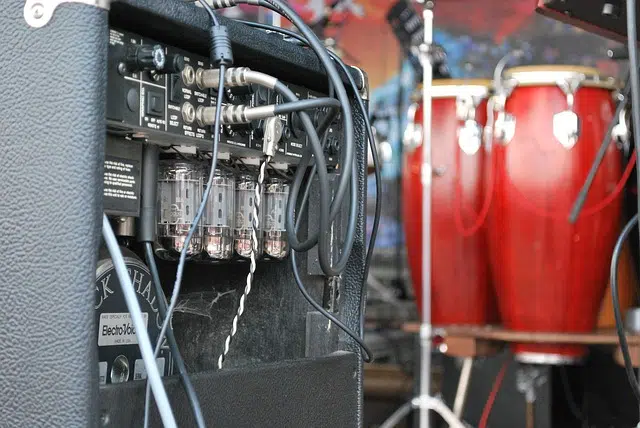
Percussion instruments are essential for music
A bongo is a musical instrument whose origin is found in the Caribbean region. It is a wooden cylinder or cone that, in its upper part, is covered by leather .
Bongo Features
Each bongo is made up of two of these drums . The upper mouth has a larger diameter than the lower one: the leather that covers the upper opening is placed taut so that, when struck, it generates the characteristic sound of this instrument, while the lower mouth is left uncovered.
The two bongo drums, which are different in size, are joined together by a wooden bridge.
Regarding the technical aspect, the bongo is a percussion instrument since, in order for it to sound, it must be hit. But more precisely it is a membrane percussion instrument , also known as a membranophone , because its vibration is generated thanks to the presence of a tense membrane (in the specific case of the bongo, the leather patch that covers the upper opening ).
Its execution
The bongo player - that is, the person who plays the bongo - usually sits and places the bongo between his knees, so that the smaller drum (which offers a higher pitched sound) is to his left.
The usual thing is that the bongo is played with the hands . However, they can also be struck with drumsticks .
Types and uses
Currently there are not only wooden bongos . You can also find metal bongos , ceramic bongos and fiberglass bongos , for example.
Today the bongo is popular all over the world and has reached numerous musical genres. In any case, generally its use occurs especially in bachata and salsa .
Learn to play the bongo
We should not underestimate the bongo for being a percussion instrument, compared to other more complex instruments, such as the piano or violin, because the perception of rhythm is essential to play it successfully, and not all of us count it among our qualities. While it is true that with a lot of work we can break down some of the barriers of our limitations, the lack of musicality is undoubtedly one of the most difficult. Therefore, the first step in embarking on learning is to ensure that you are able to accompany a melody .
Then comes the time to choose the appropriate type, in this case referring to the size of the bongo. This property is inversely proportional to the height of the sound it produces: the larger it is, the deeper its sound , just as happens with strings. On the other hand, it is necessary to clarify that the largest ones usually have a greater range of notes than the small ones. To take the first steps, a small one is recommended.

Although it is associated with traditional music, the bongo is present in modern genres
The material of the bongo is another point to take into account before starting, as this completely affects the qualities of its sound, the timbre and even the duration of the notes. The most used is wood, but this depends largely on the geographical origin of the instrument, which is why it is advisable to decide on the style and then orient yourself by the material most used for its execution.
An aspect that usually generates bad decisions when buying the first bongo, or any instrument to learn for the first time, is quality . Should we buy a professional-grade bongo to avoid a second financial investment when we start gigging, or a basic one in case we never get to that point? Both options are possible, and no one can answer such questions from the beginning. When in doubt, it is better to go halfway.
